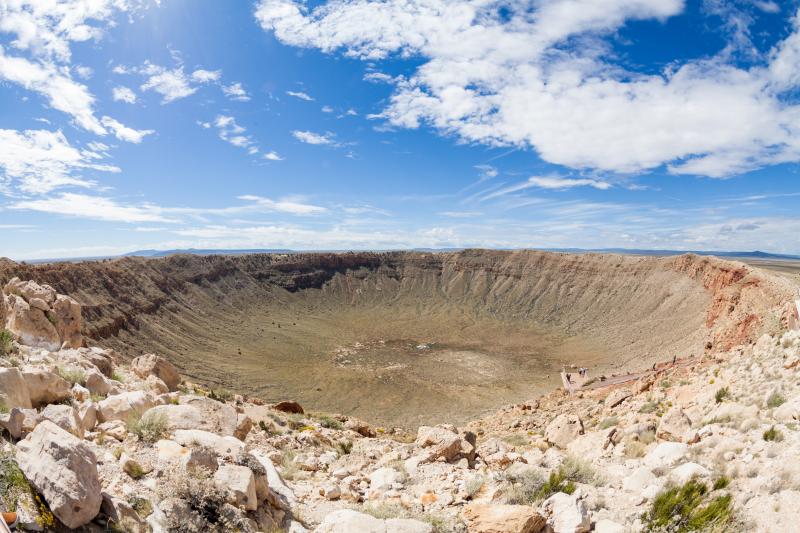- Series:Astronomy, Transcript English
Psalm 8:3-4
“When I consider thy heavens, the work of thy fingers, the moon and the stars, which thou hast ordained; What is man, that thou art mindful of him? and the son of man, that thou visitest him?”
The Solar System has seen many impacts. On so many bodies of the Solar System, these impacts have produced craters. It is well known that the surface of the Moon contains many craters, which are thought to have been formed when a meteorite hit the Lunar  surface. However, the Moon is not alone. I have often shown my audiences a photograph of the surface of Mercury, and asked them what it is, because I know that most people will think it is the Moon, because of its cratered surface. In recent years, exploratory, unmanned missions to bodies in the further reaches of the Solar System have revealed surfaces pockmarked with craters.
surface. However, the Moon is not alone. I have often shown my audiences a photograph of the surface of Mercury, and asked them what it is, because I know that most people will think it is the Moon, because of its cratered surface. In recent years, exploratory, unmanned missions to bodies in the further reaches of the Solar System have revealed surfaces pockmarked with craters.
We cannot give a definitive answer for how or when the craters were formed. Some creationists believe that this cratering was actually a part of God’s creative process, so that the cratering took place within the Creation Week. Others believe that the cratering was part of the process that initiated the Flood.
One creation researcher has suggested that a massive Flood-time bombardment of other planets and moons would also have led to massive impacts on the Earth. Some of these impacts would have been of sufficient energy to cause large vertical faulting, and to help split the Earth’s crust into the Tectonic Plates we see today.
Whatever cratering mechanism turns out to be the best one, we can be sure that these impacts were not random accidents, not merely freaks of nature. They had a purpose in God’s plan, whether they were at the formation of the Solar System, or at the initiation of the Flood.
Nothing has happened by chance, Lord God. Everything has taken place for a reason, even though we may not have that reason revealed to us. Thank You for doing all things well. Amen.
Author: Paul F. Taylor
Ref: Oard, M, What do impacts accomplish in the first hour?, Journal of Creation 27(1):90–98 April 2013. Image: Adobe Stock Photos, licensed to author.
